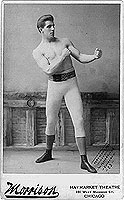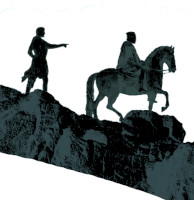Having read and annotated these three founding documents along three different lines of inquiry, I find myself wishing to answer the many charges from the Left that America was founded for the good of every one who can make it to these shores by hook or crook, and the Right who claim that America was founded only for whites. In the middle you have Libertarians worshipping the money making process as the sacral function for which this nation was supposedly founded to facilitate.
Which, if any, of these three views is correct?
In trying to match these documents up I decided to follow the question of personal identity as it relates to race, class and nation and marked off each document in the order they were written whenever a reference to a certain kind of person was made. For, in such important documents, which had deletions enough from the original drafts to make a core for a master’s thesis study, the fact that a reference to a certain type of person was made, denotes that dealing with [whether negatively or positively] that sort of person was a priority to the Founding Fathers.
Nothing that was not important to the foundation of this nation, in the minds of the founders and by extension their constituencies, was included in these documents. The positive and negative mentions of these types of persons are to be found listed below for the declaration and otherwise in the following sections:
A Firm League of Friendship [The Articles of Confederation]
We the People [The Constitution of the United States of America]
The types of persons by class:
-Free
-Undesirable
-Unfree
The types of persons by race:
-White
-Indian
-Other
Declaration of Independence
1776
The following kinds of persons are of concern, according to frequency of mention:
-Free = 1 positive [citizens]
-Undesirable = 0
-Unfree = 0
-White = 0
-Indian = 1 negative [enemies]
-Other = 0
The Articles of Confederation
1777
-Free = 1
-Undesirable = 5 [1]
-Unfree = 2
-White = 1
-Indian = 2
-Other = 0
The Constitution
1787-1804, Including the first 12 Amendments, with the 13th Amendment basically serving notice of the foundation of a new national structure in 1865.
-Free = 1
-Undesirable = 3 [1]
-Unfree = 5
-White = 0
-Indian = 2
-Other = 0
The Foci Arc
For this purpose the Declaration is a very short dot, the starting orientation of 1 year, the Articles were essentially in effect for 10 years and the Constitution was partially in effect for 17 years and then the fully amended version for 57 years, marking the Constitution as reflecting more fully and for a longer period the concerns of the ruling American elite and presumably their voting constituency.
-Free = 1/1/1 consistent positive concern [2]
-Undesirable = 0/5/3 descending negative concern
-Unfree = 0/2/5 ascending positive concern [3]
-White = 0/1/0 descending positive concern [4]
-Indian = 1/2/2 consistent negative and positive concern [5]
-Other = 0/0/0 nonexistent concern [3]
Notes
1. The strong negative concern for criminals, traitors, poor, runaways and homeless in the Articles of Confederation is replaced in the Constitution partially by the setting of office holding requirements of holding citizenship for 7 years and 14 years respectively, terms of residency which were based on the indentured and convict slave terms, which were in turn based on ancient Hebrew law.
2. The flat positive concern is a reflection of a contractual promise necessary to facilitate economic expansion and military mobilization.
3. Whites, negroes and mixed-race folk were all held, freed and recovered under the same federal laws, with unfree nonwhites held in every state of the Union up to 1865 and unfree whites held in increasingly diminishing numbers until 1848 when white slave sailors were finally released after the Mexican War. The concern for the nonwhites is reflected only in the debate over their status as free or unfree people, reflected in the ascending positive concern for unfree folk in three lines above. Ironically, prominent men did not rail against slavery until it became a condition exclusive to blacks and mixed race folk.
4. White is only mentioned once in all the founding documents and relates directly to a demand to mobilize fighting men of European origin from the free and unfree segments of society. Below the Mason Dixon Line, these white men were put back in chains after the war was won in 1783, suggesting that an appeal to whiteness [see also the Indian Wars] was simply a means of exploiting racial identity for military purposes. In the Articles, a white slave is counted as 3/5ths of a man as surely as a negro is.
5. Hatred for Indians screams from the Declaration and then cools into an even concern over good relations with some tribes and war with others in the Constitution.
Support Plantation America Research
To support this project and view some graphics go to:
link › patreon.com/jameslafond











